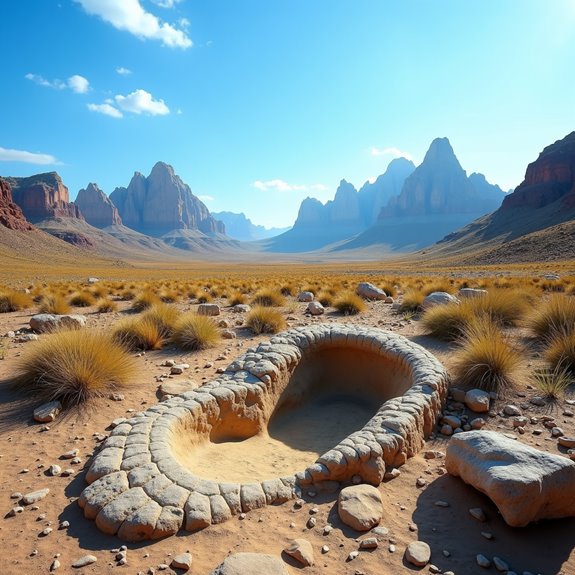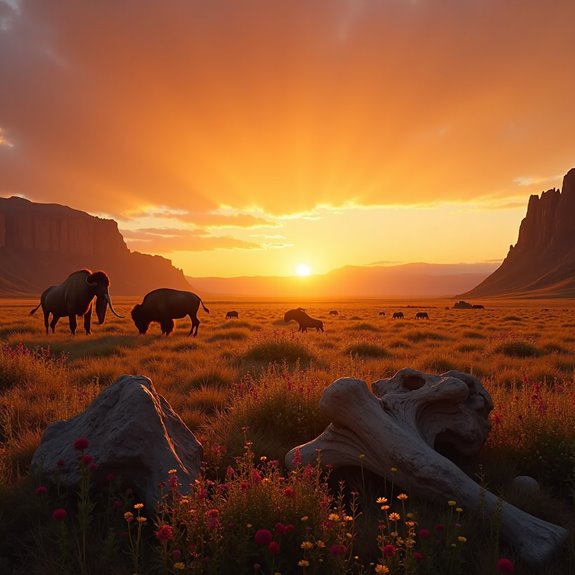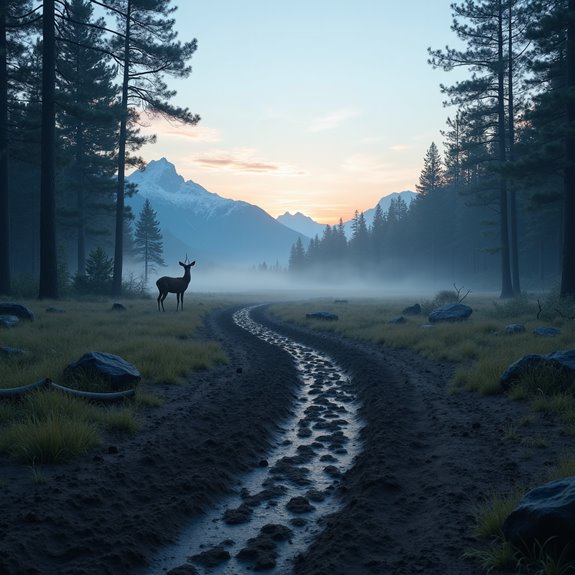Did Giants Once Roam North America?
The question of whether giants once roamed North America sparks intrigue among historians and enthusiasts alike. While folklore and indigenous myths hint at such beings, real evidence remains elusive. Numerous claims about oversized skeletons and sightings linger in public consciousness, but are these tales rooted in fact or fantasy? As narratives intertwine with interpretations of ancient fauna, the mystery deepens. What truths might lie hidden in the shadows of our past? Some researchers draw connections between ancient giants and stone circles, suggesting these structures may have been constructed as part of rituals honoring these colossal beings. Additionally, archaeological findings sometimes reveal large artifacts that provoke further discussion about human interaction with these mythical figures. As the search for answers continues, the lines between history and legend blur, inviting us to explore the unexplained mysteries that shaped our world.
Introduction

Giants have long captured the imagination of cultures around the world, and North America is no exception. From ancient myths to modern folklore, stories of towering beings have fascinated many across the continent. Indigenous peoples often spoke of giants, incorporating them into their traditions, legends, and oral histories. These narratives reflect both awe and fear, shaping perspectives on nature and humanity’s place within it. Additionally, archaeological findings have occasionally sparked debates, fueling theories about the existence of these colossal figures. Whether as metaphors for natural forces or representations of human struggles, giants serve as a compelling bridge between imagination and reality. The allure of giants continues to inspire curiosity, urging exploration into the meaning behind their legendary status in North American culture.
Ancient North American Fauna

The tales of giants in North American folklore often intertwine with the incredible fauna that once roamed the continent. Massive creatures like the woolly mammoth and saber-toothed tiger dominated prehistoric landscapes, showcasing the diversity of ancient life. These animals adapted to harsh climates, grazing and hunting through vast regions. The giant ground sloth, another notable inhabitant, thrived in the lush vegetation, while the colossal mastodon lumbered across the land. Additionally, species like the short-faced bear exemplified the unique adaptations these animals underwent. The sheer size and ferocity of these prehistoric critters often sparked imaginations, blending fact and myth. Their existence highlights the dramatic shifts in ecosystems throughout history, paving the way for modern fauna we now recognize.
Notable Cases or Sightings

What accounts for the enduring fascination with giant beings in North America? Numerous notable cases and sightings have fueled this intrigue. In 1930, a group of miners in California claimed to have discovered giant skeletal remains, sparking widespread curiosity. In the 1880s, reports from Nevada detailed the sighting of enormous humanoid figures, igniting local folklore. Furthermore, the famous “Bigfoot” sightings have persisted for decades, with many alleging encounters with a towering, hairy creature roaming the forests. Additionally, Native American legends often speak of giant beings who interacted with humans in ancient times, further enriching the narrative. Each reported sighting or discovery adds layers to the mystique surrounding these legendary giants, enchanting imaginations and prompting further exploration into history and folklore.
Common Theories or Explanations
Reports of giant beings have led to various theories and explanations that attempt to make sense of such claims. Some suggest that these giants could be the result of misinterpreted fossil finds or the discovery of oversized animal bones, leading to inflated ideas about human size. Others consider cultural myths shaping perceptions of giants, claiming these stories grew from historical figures or exaggerated encounters. In addition, skeptics argue that psychological factors, such as folklore or collective imaginations, could create legends of giants in the minds of witnesses. Moreover, some view these reports through a scientific lens, suggesting genetic anomalies or the possibility of giants existing in earlier eras, stimulating debates among enthusiasts and researchers alike.
Frequently Asked Questions
What Types of Giants Are Believed to Have Lived in North America?
Many believe various giants inhabited North America, including colossal mammoths and giant ground sloths. They think these creatures roamed the land, enchanting imaginations and sparking interest in prehistoric life among researchers and enthusiasts alike.
How Do Legends of Giants Compare Across Different Cultures?
Legends of giants vary widely across cultures, reflecting unique beliefs and histories. Many cultures depict giants as powerful beings, often embodying chaos or strength, while others view them as protectors or creators, illustrating diverse mythological themes.
Are There Any Archaeological Findings Supporting Giant Sightings?
Archaeological findings haven’t definitively supported giant sightings. Most discoveries rely on ancient myths and folklore. Researchers continually debate evidence, but mainstream science often regards these tales as symbolic rather than concrete historical truths.
What Impact Did Climate Change Have on Ancient Giants?
Climate change altered ancient ecosystems, affecting food availability for large creatures. As temperatures shifted, many giants faced habitat loss and resource scarcity, leading to their decline and eventual extinction, as nature adapted to new environmental conditions.
Did Giants Coexist With Other Prehistoric Animals?
Many ancient species occupied the same habitats, so giants likely coexisted with various prehistoric animals. They interacted within ecosystems, competing for resources and influencing each other’s survival, shaping the dynamics of their environments.


